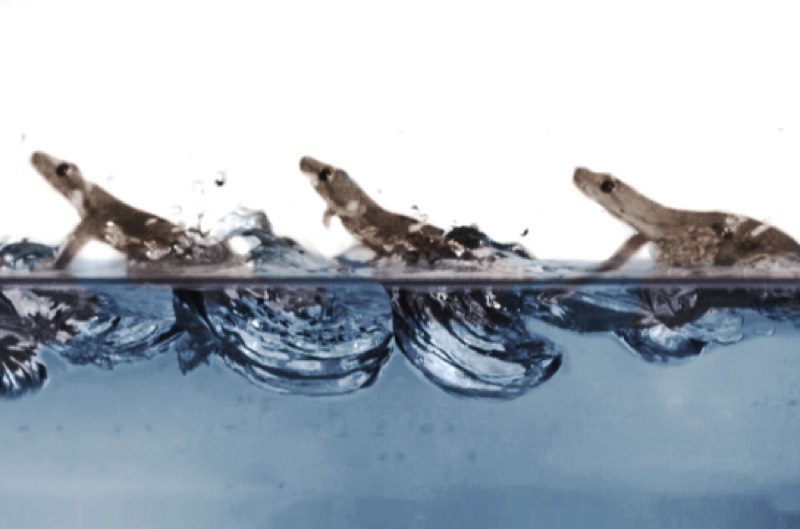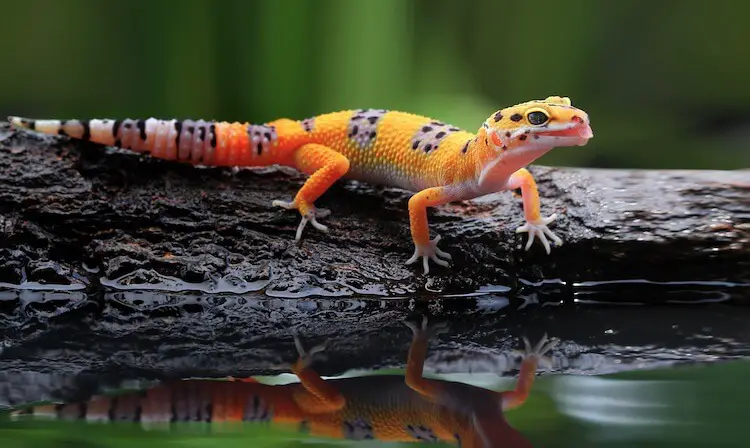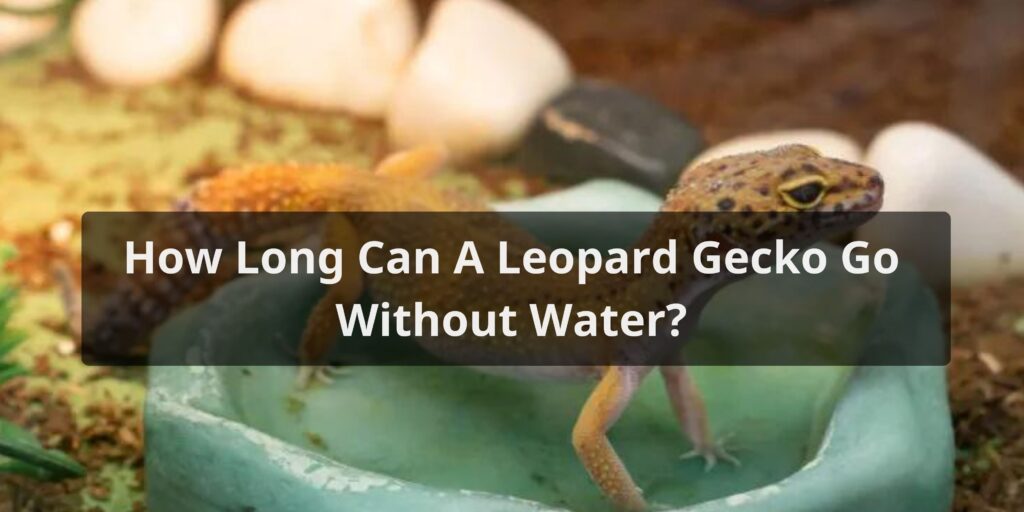Leopard geckos are popular pet reptiles that originate from arid regions, so they are well adapted to deal with dry conditions. However, all animals need water to survive, so leopard gecko owners should be aware of their pet’s hydration needs. Here is a detailed look at how long can a leopard gecko go without water.
Normal Hydration Needs

In normal circumstances, leopard geckos should have constant access to clean drinking water in their habitat. They typically drink water every day, lapping it up with their tongues. The amount varies based on factors like age, size, diet, and enclosure conditions. Adults generally drink around 5-10 ml per day.
Leopard geckos get most of their hydration from the moisture in their prey foods, particularly live insects like crickets. Their native desert habitat provides food that is high in fluids. This allows them to go longer between drinks compared to some other reptiles. Still, a bowl of fresh water should always be available.
Dehydration Risk Factors

Leopard geckos are susceptible to dehydration if they go too long without access to water. Risk factors include:
- Limited drinking water – If the water dish dries up or is not refilled regularly.
- Low humidity – Very dry tank conditions can cause fluid loss through their skin and respiratory surfaces.
- High temperatures – Excess heat can lead to increased panting and evaporation of bodily fluids.
- Sickness/injury – Certain illnesses and injuries increase fluid requirements or prevent drinking.
- Improper diet – Feeder insects that are not gut loaded with fluids can exacerbate hydration problems.
- Old age – Elderly geckos may drink less and have a harder time staying hydrated.
Signs of Dehydration

There are some clear signs that indicate a leopard gecko is becoming dehydrated:
- Increased skin shedding – Due to dryness and difficulty shedding cleanly in one piece.
- Sunken eyes – As dehydration causes the eyeballs to sink further into the head.
- Lethargy and weakness – Dehydration depletes the body’s energy.
- Wrinkled skin – The skin loses elasticity.
- No feces or urates – Constipation from lack of fluids. White urates will disappear.
- Refusal to eat prey – Appetite decreases as metabolism slows.
- Muscle spasms – Particularly in the legs.
- Rapid breathing – To compensate for fluid loss.
- Red discharge from nose/mouth – Can indicate tissue irritation from dehydration.
If a leopard gecko shows multiple signs of dehydration, it needs immediate veterinary care. Severe, prolonged dehydration can lead to kidney failure, seizures, coma, and even death.
How Long Can They Go Without Water?
The exact time a leopard gecko can go without water depends on various factors like age, health status, and conditions in the habitat. Here is a general guideline:
- 2 to 3 days – Leopard geckos can typically survive this long without direct access to drinking water, although they may start showing early signs of dehydration like increased shedding. Their bodies pull water from food and stored reserves.
- 5 to 7 days – After about a week without water, leopard geckos will be quite dehydrated. Their bodies cannot adequately compensate for the lack of fluids. They will show multiple symptoms and be in danger if not rehydrated.
- 10 to 14 days – Going this long is life-threatening. Without veterinary care, the gecko likely will not survive once severely dehydrated and physically depleted. Death can occur from kidney failure, chemical imbalances, or other complications.
Prevention and Treatment
The best way to prevent dehydration is to provide clean drinking water at all times. The water dish should be refilled at least twice weekly and cleaned/disinfected regularly. Proper temperatures, humidity, diet, and other care is key too.
If a leopard gecko does become dehydrated, the first step is providing access to fresh water again. Light misting can provide temporary relief as well. Oral fluids from syringes help deliver hydration. More severely dehydrated geckos often need fluid injections, nutritional support, and electrolyte therapy from an exotic vet. With prompt treatment, most make a full recovery.
Conclusion
In their native desert environment, leopard geckos can withstand relatively dry conditions. But captive geckos rely on their owners to meet their hydration needs. While they may survive a couple days without water, dehydration poses a serious threat after about a week. Leopard gecko owners should be diligent about providing fresh clean drinking water daily along with an appropriate diet and habitat. This will keep their pets hydrated and healthy.
FAQs About How Long Can A Leopard Gecko Go Without Water
Can leopard geckos obtain water from their food sources?
Leopard geckos can obtain some water from their food sources, such as insects. However, this is not sufficient to meet their hydration needs entirely. They still require access to a clean water source in their enclosure to stay properly hydrated.
What signs indicate that a gecko is dehydrated?
Signs of dehydration in leopard geckos include sunken eyes, wrinkled skin, reduced skin elasticity, lethargy, increased thirst, and reduced urination. A dehydrated gecko may also have sticky mouth discharge. Addressing dehydration promptly is crucial for their well-being.
How do temperature and humidity levels affect water needs?
Temperature and humidity levels can significantly affect a gecko’s water needs. Higher temperatures and lower humidity levels can lead to increased water loss through evaporation and respiration. Adjusting these conditions to meet their natural requirements is essential to prevent dehydration.
Are there age-related differences in water requirements?
Yes, age can influence water requirements. Juvenile geckos, with higher metabolic rates and growth needs, may have slightly higher water requirements compared to adults. However, proper hydration is vital for geckos of all ages to maintain overall health.
Can providing a humid hide reduce a gecko’s water intake?
Yes, providing a humid hide can help reduce a gecko’s water intake to some extent. It offers a microenvironment with elevated humidity, allowing them to absorb moisture through their skin, reducing their reliance on drinking. However, access to clean water should always be available to ensure adequate hydration.



